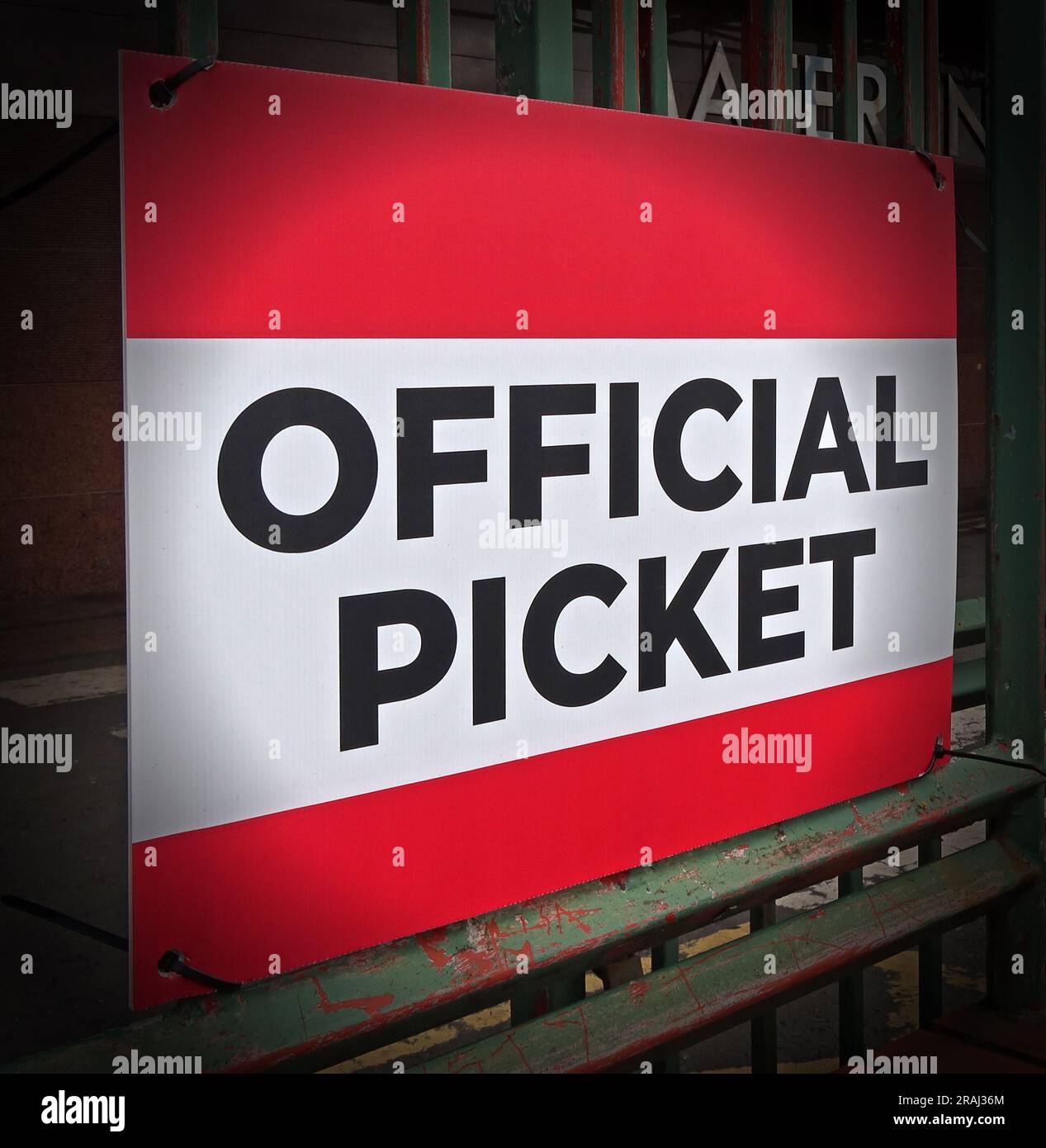Official Picket poster, seen when trade union strikes are active, via mass or secondary picketing at hospitals, rail stations or other places of work

Image details
Contributor:
Tony Smith / Alamy Stock PhotoImage ID:
2RAJ36MFile size:
23.3 MB (513.1 KB Compressed download)Releases:
Model - no | Property - noDo I need a release?Dimensions:
2820 x 2892 px | 23.9 x 24.5 cm | 9.4 x 9.6 inches | 300dpiDate taken:
24 June 2023Location:
United KingdomMore information:
Picketing is a form of protest in which people (called pickets or picketers) congregate outside a place of work or location where an event is taking place. Often, this is done in an attempt to dissuade others from going in ("crossing the picket line"), but it can also be done to draw public attention to a cause. Picketers normally endeavor to be non-violent. It can have a number of aims, but is generally to put pressure on the party targeted to meet particular demands or cease operations. This pressure is achieved by harming the business through loss of customers and negative publicity, or by discouraging or preventing workers or customers from entering the site and thereby preventing the business from operating normally. Picketing is a common tactic used by trade unions during strikes, who will try to prevent dissident members of the union, members of other unions and non-unionised workers from working. Those who cross the picket line and work despite the strike are known pejoratively as scabs. In the UK mass picketing was made illegal under the Trade Disputes and Trade Unions Act 1927, moved by the leaders of what would soon be National Labour, after the 1926 General Strike. Otherwise picketing was banned by the Liberal-tabled Criminal Law Amendment Act 1871 but is decriminalised by the Conservative-tabled Conspiracy and Protection of Property Act 1875. The Trade Union and Labour Relations (Consolidation) Act 1992 gives protection, under civil law, for pickets who are acting in connection with an industrial dispute at or near their workplace who are using their picketing peacefully to obtain or communicate information or persuading any person to work or abstain from working. However, many employers seek specific injunctions to limit the effect of picketing by their door if they can evidence a high likelihood of intimidation or, in general, on non-peaceful behaviour and/or any that significant numbers of the picketers are or will in all likelihood be non-workers